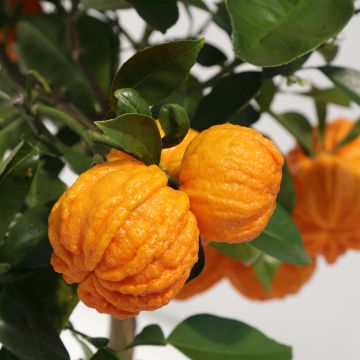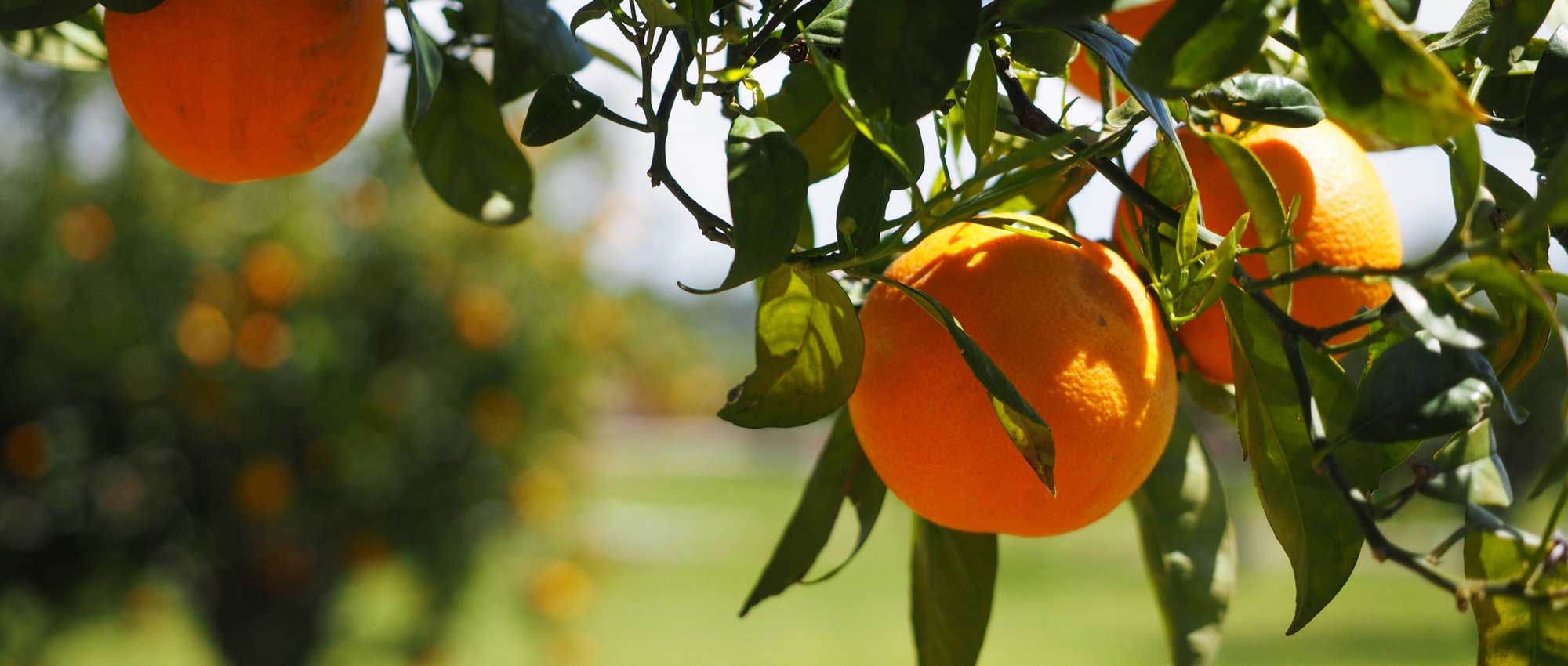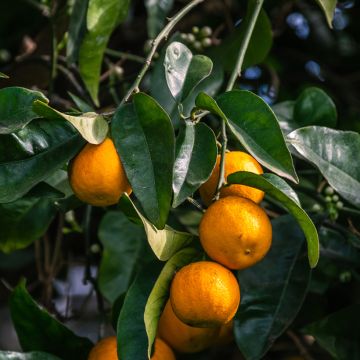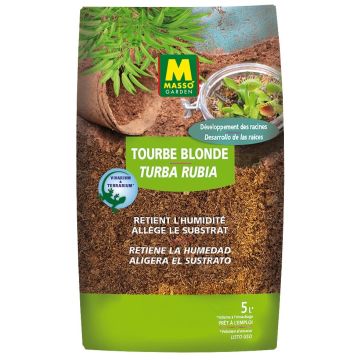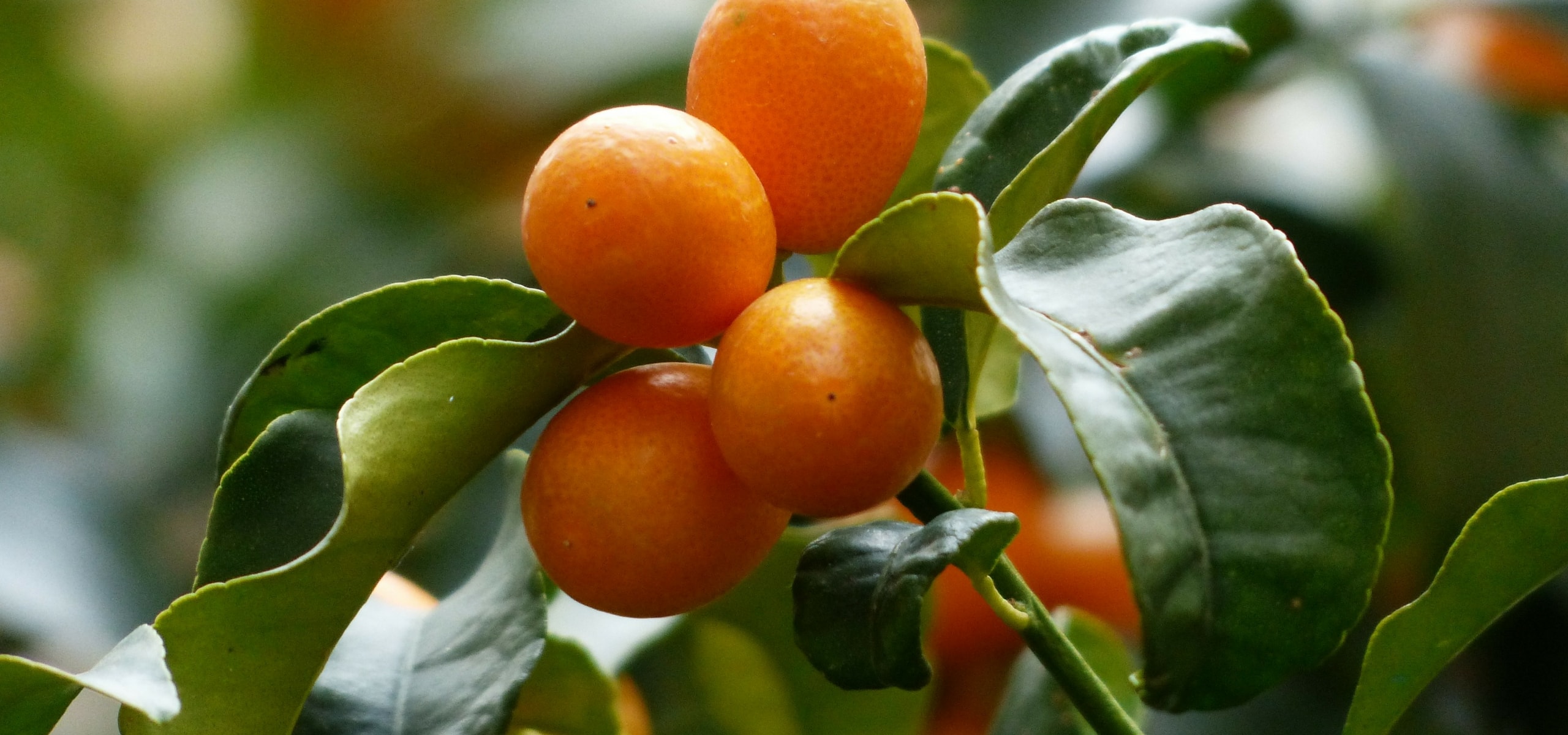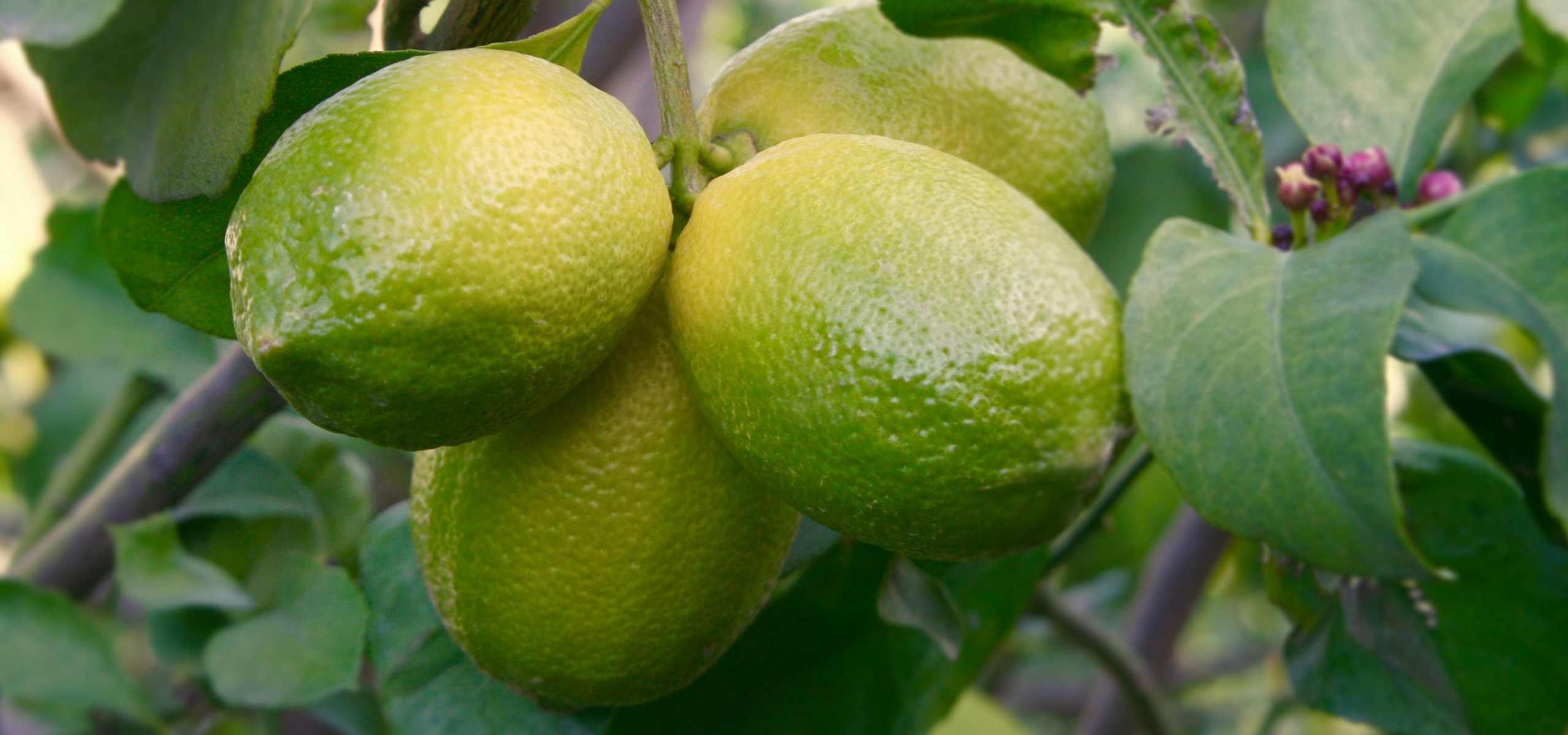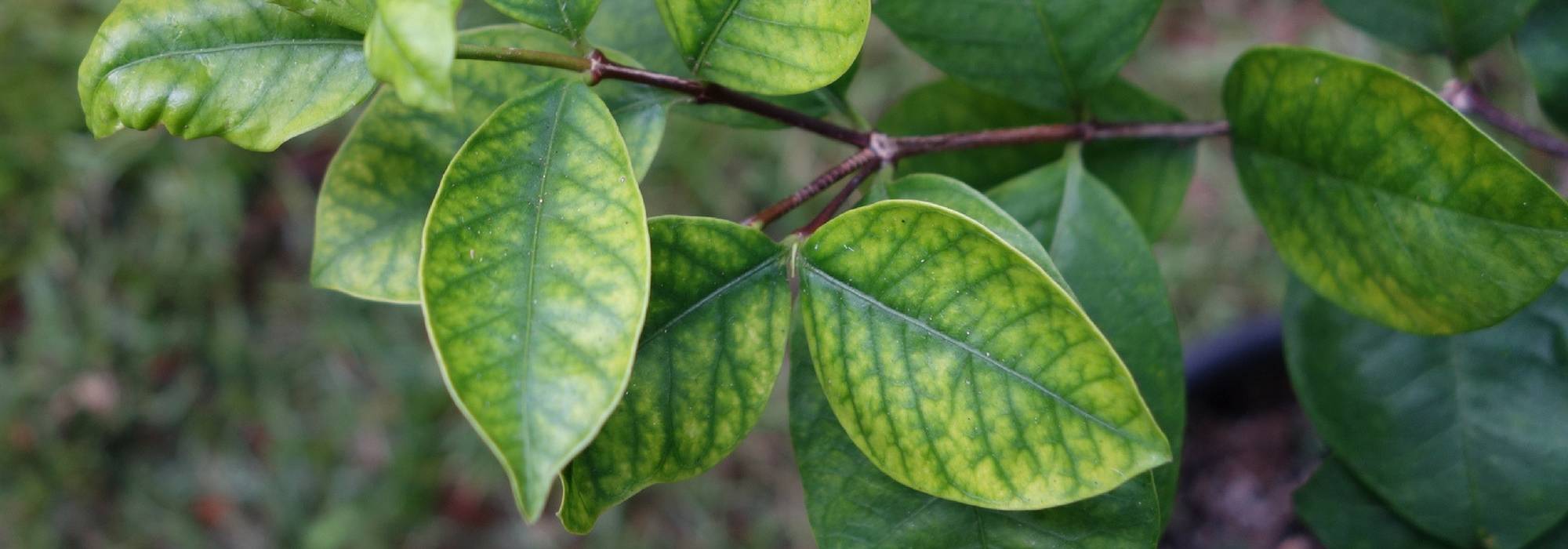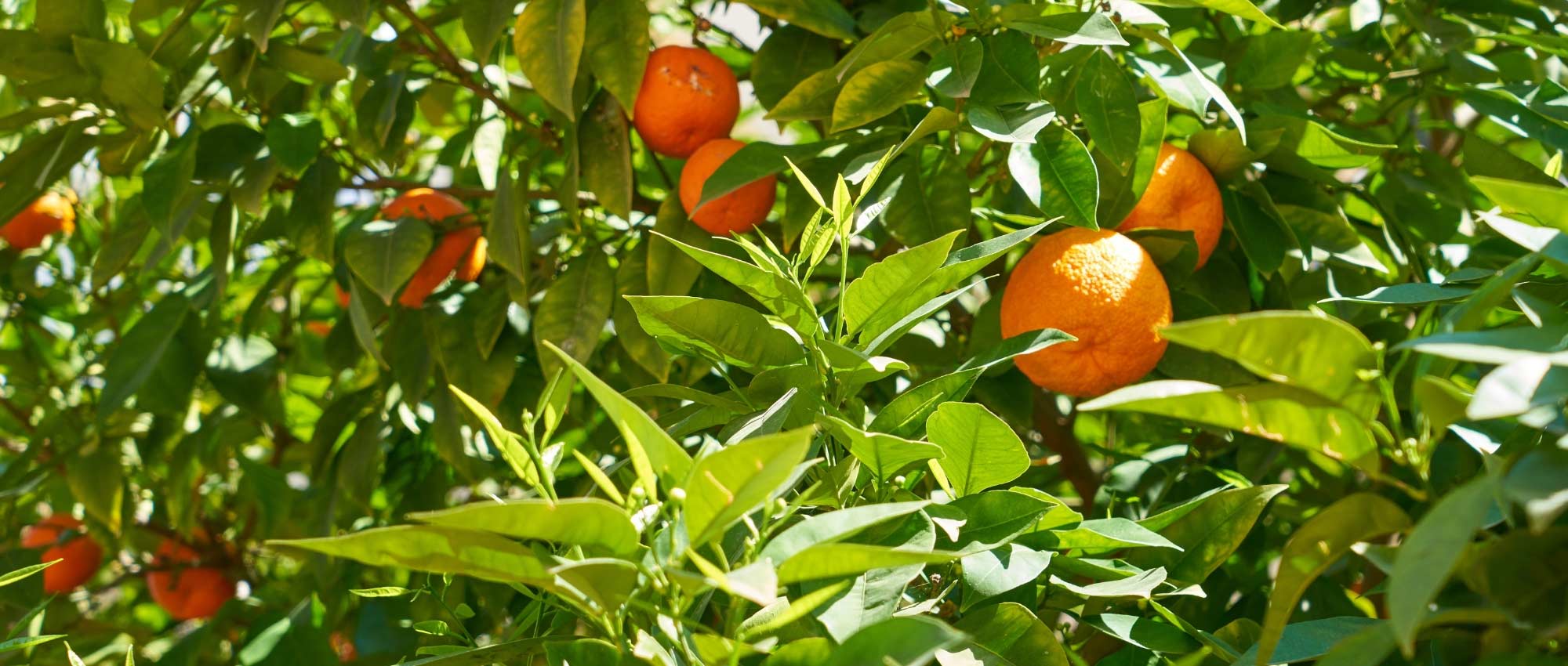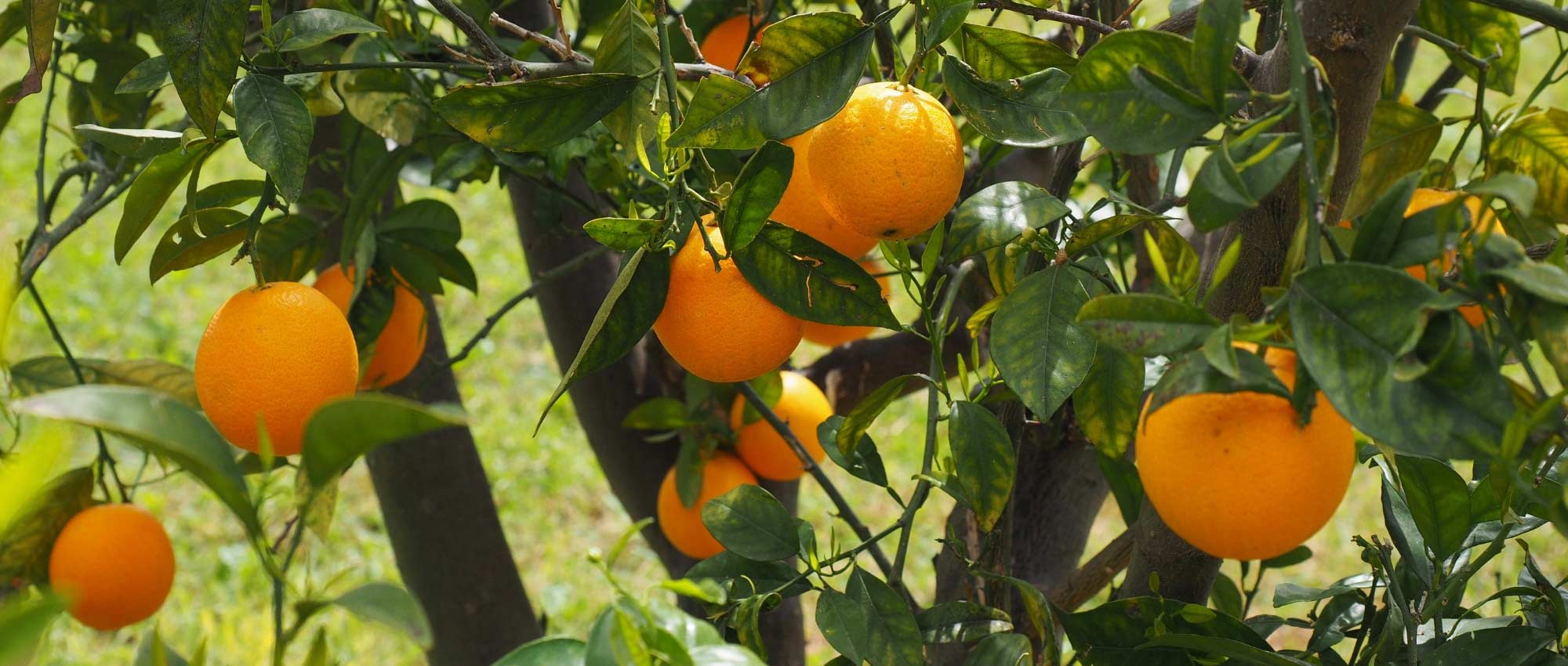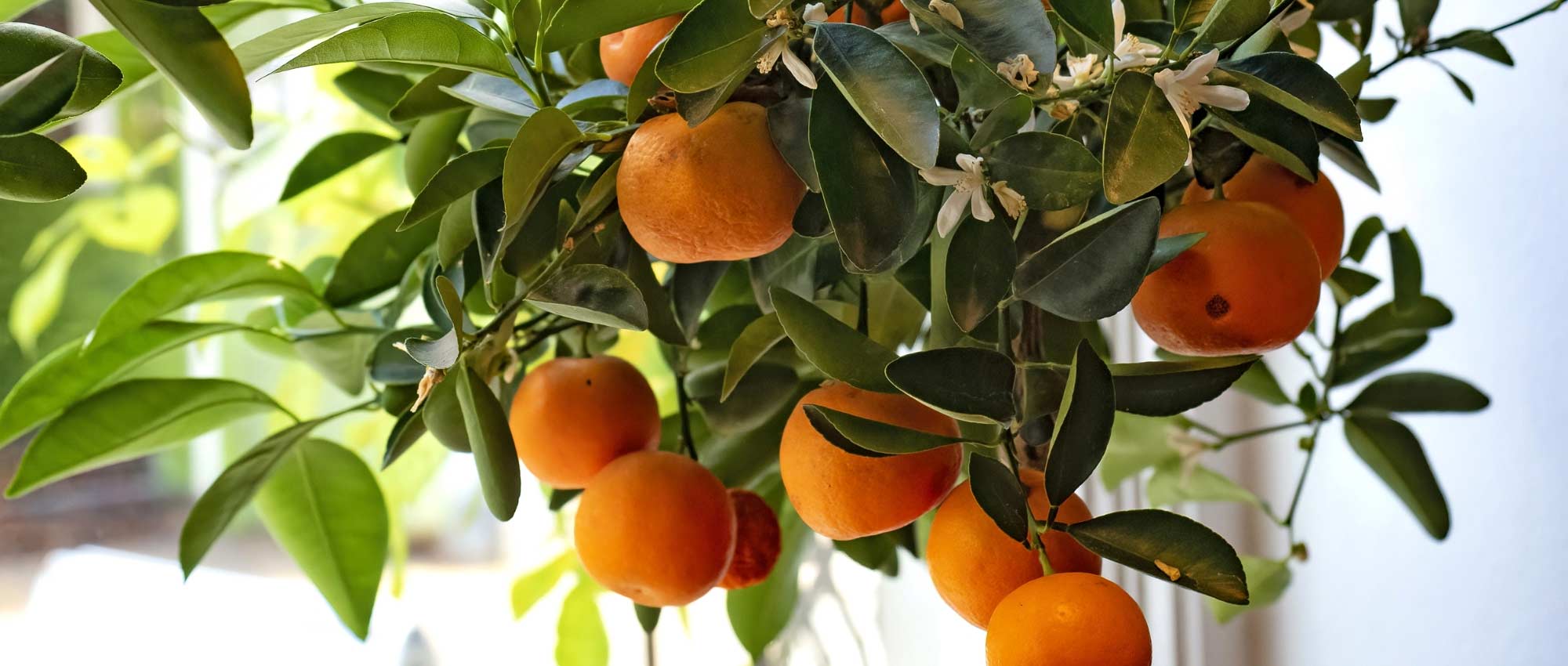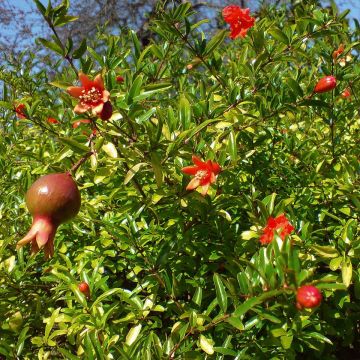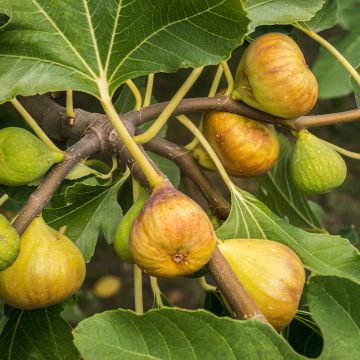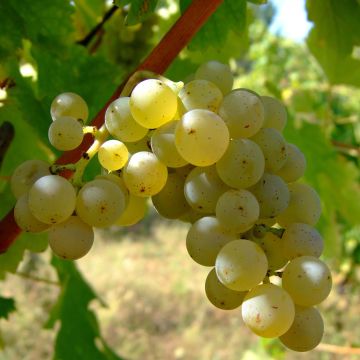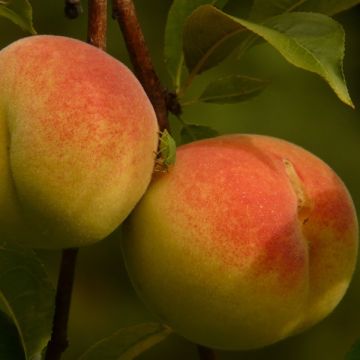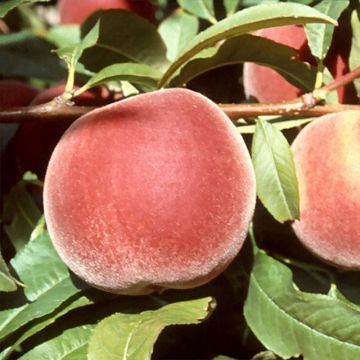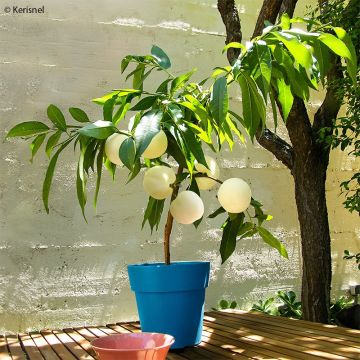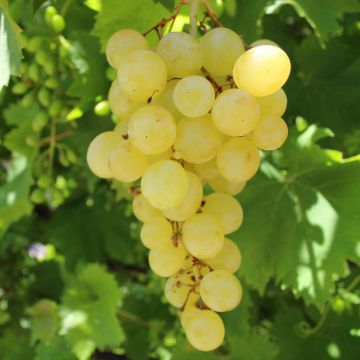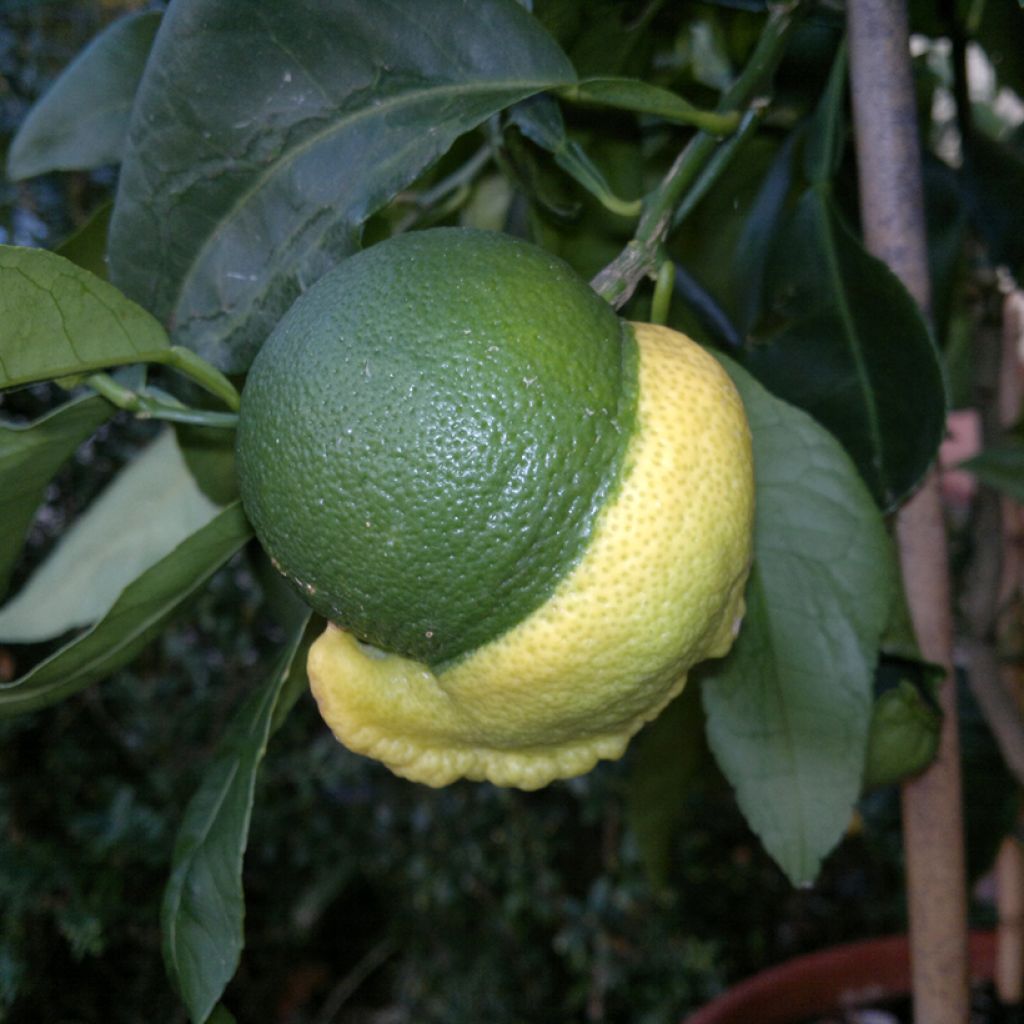

Citrus medica x aurantium Bizzarria - Bizzaria of Florence
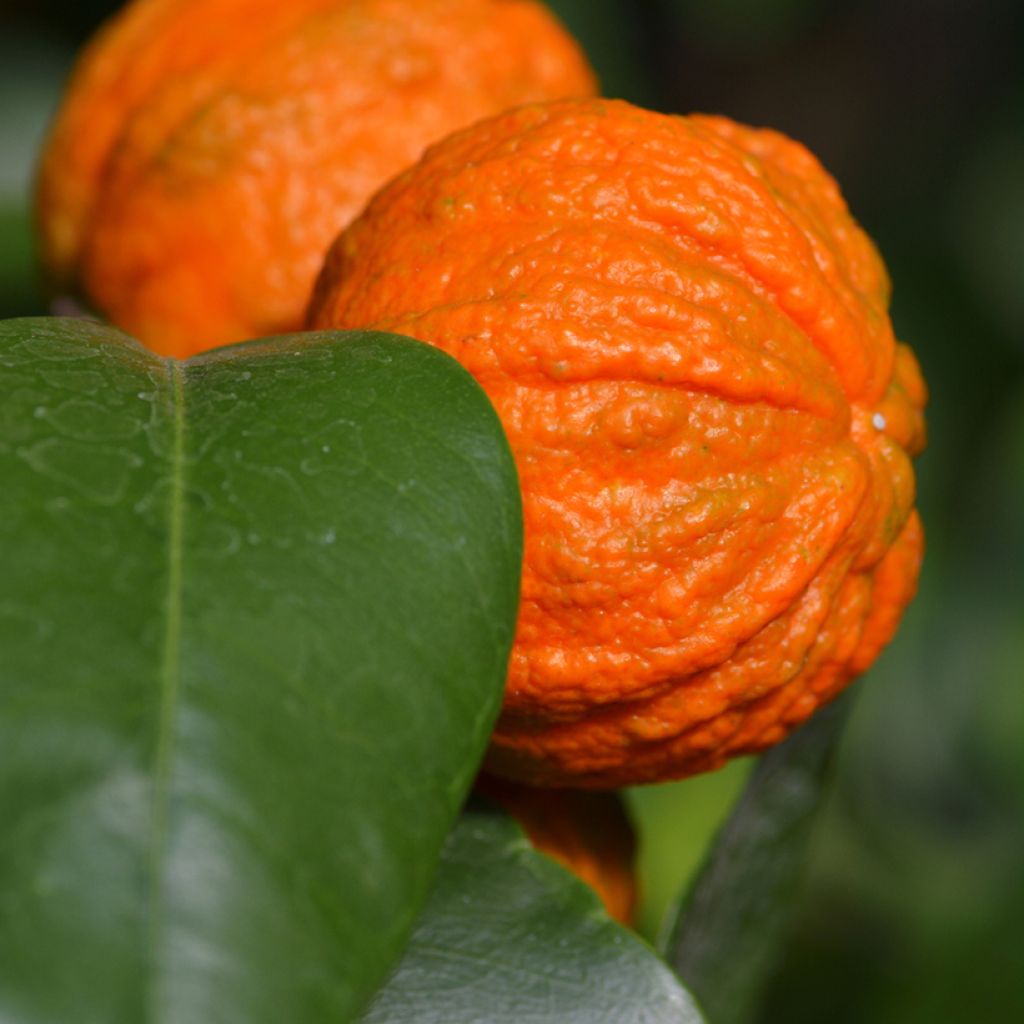

Citrus medica x aurantium Bizzarria - Bizzaria of Florence
Citrus medica x aurantium Bizzarria - Bizzaria of Florence
Citrus medica x aurantium Bizzaria
Bizzarria of Florence
Special offer!
Receive a €20 voucher for any order over €90 (excluding delivery costs, credit notes, and plastic-free options)!
1- Add your favorite plants to your cart.
2- Once you have reached €90, confirm your order (you can even choose the delivery date!).
3- As soon as your order is shipped, you will receive an email containing your voucher code, valid for 3 months (90 days).
Your voucher is unique and can only be used once, for any order with a minimum value of €20, excluding delivery costs.
Can be combined with other current offers, non-divisible and non-refundable.
Why not try an alternative variety in stock?
View all →This plant carries a 6 months recovery warranty
More information
We guarantee the quality of our plants for a full growing cycle, and will replace at our expense any plant that fails to recover under normal climatic and planting conditions.
Description
The Bizzarria Orange Tree or "Bizzaria of Florence" is a true botanical curiosity, as ornamental as it is fascinating. This rare citrus tree, resulting from the union between the citron tree (Citrus medica) and the bitter orange (Citrus x aurantium), stands out for its perfectly unique fruits. this elegant bush is adorned with beautiful evergreen leaves, producing sweetly scented white flowers followed by truly bizarre fruits. These qualities make it a plant of choice for decorating Mediterranean gardens or sunny terraces. This variety is hardy down to around -7°C, so it will only thrive in the ground in mild climates and sheltered gardens.
The Bizzarria Orange Tree (Citrus x aurantium 'Bizzarria') is a plant chimera resulting from the physical fusion between a bitter orange tree and a citron tree. This botanical curiosity was discovered in 1644 by a gardener in Tuscany, Italy. Graft chimeras, such as the Bizzarria, display characteristics of both parent plants on a single individual, making them particularly fascinating for botanists and collectors.
The Bizzarria has a compact yet rounded habit. In the ground, it can reach a height of 3 to 4 m and a spread of 1.5 to 2.5 m. Its growth is moderate, with an annual increase of 30 to 40 cm after the first two years of planting. Its leaves are evergreen, ovate, leathery, and glossy green. They release a pleasant fragrance when crushed, reminiscent of citrus essential oils. The white, fragrant flowers appear in spring. They are medium-sized, measuring about 2 to 3 cm in diameter, and emit a neroli-like scent characteristic of citrus trees.
The fruits of the Bizzarria are particularly remarkable due to their heterogeneous appearance. On the same tree, you may observe round, smooth fruits resembling bitter oranges, conical and pointed fruits reminiscent of the 'Florentina' citron, and fruits displaying intermediate characteristics with streaked or bumpy patterns. When ripe, the fruit colour varies from yellow to green to orange, reflecting the combination of the two parent species. The juice of the fruits is sweet and sugary, while the peel is bitter. These fruits can be used to make marmalades, bitter jams, or syrups, and the peel can pleasantly flavour savoury dishes or liqueurs.
Like all Citrus, the Bizzarria contains essential oil pockets in its leaves, flowers, and fruits, often visible to the naked eye, which can be extracted through distillation (flower and leaves) or pressing (zest) to produce essential oil.
Most citrus trees thrive in the ground in Mediterranean coastal regions, where they find the warmth they require year-round. Elsewhere, they should be grown in pots and brought indoors at the first sign of frost. Somewhat tender, the Bizzarria begins to suffer from cold at around -6°C, particularly its fruits.
The Bizzarria Orange Tree, like most citrus trees, is a self-fertile bush, meaning a single plant is sufficient for complete pollination and fruit production. However, if your citrus tree remains permanently indoors, you will occasionally need to allow pollinators to do their work or hand-pollinate with a brush.
Citrus medica x aurantium Bizzarria - Bizzaria of Florence in pictures
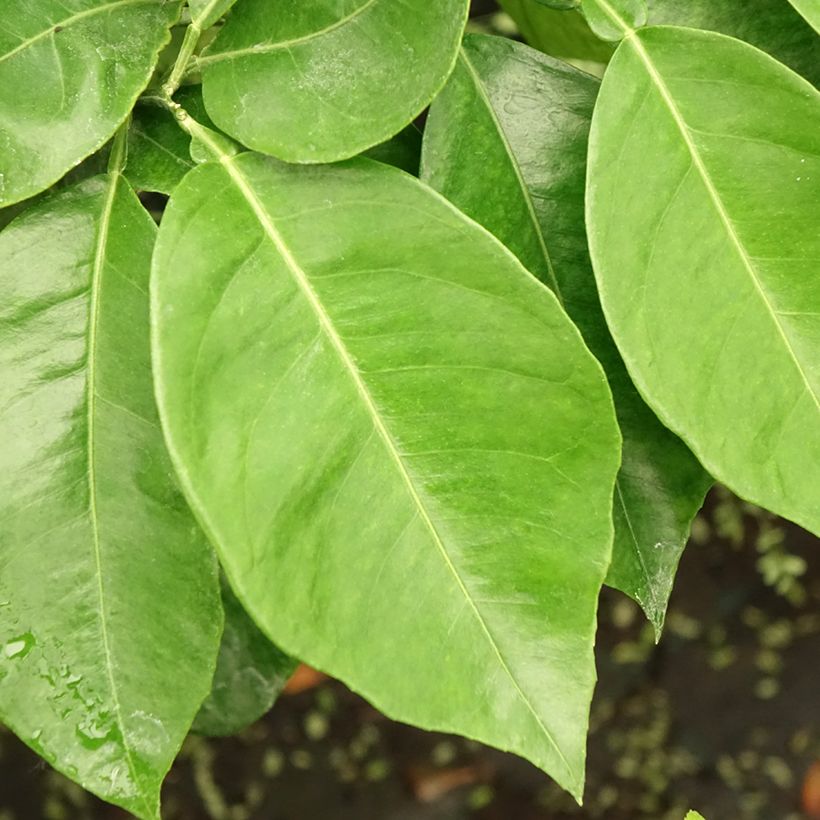



Plant habit
Fruit
Flowering
Foliage
Botanical data
Citrus
medica x aurantium
Bizzaria
Rutaceae
Bizzarria of Florence
Citrus x aurantium Caniculata, Citrus bizzaria, Citrus aurantium bizzaria
Cultivar or hybrid
Other Bitter orange - Seville orange
View all →Planting and care
Planting in the ground: The Bizzarria Orange Tree prefers slightly acidic or neutral soils and does not tolerate limestone well. It is only advisable to plant it directly in the ground if you live along the Mediterranean coast. The best time for planting is early spring, in March and April. Start by watering the root ball to moisten it through capillary action. Dig a hole four to five times the volume of the root ball. If your soil is limestone-based, amend it with ericaceous soil. If it is heavy and compact, lighten it with one-third sand. Citrus trees dislike poorly draining soils, as they hate having their roots in stagnant water. Be careful not to bury the collar, then firmly tamp down the soil.
Citrus trees are naturally greedy: in all cases, enrich the soil with well-rotted compost, humus, or a "special citrus" fertiliser. Choose a sunny but not scorching spot for your bush, sheltered from the wind to prevent foliage from drying out and away from any sea spray.
Pot planting: In all other regions, Citrus trees should be planted in pots and stored in an orangery or cold greenhouse during winter, then moved outdoors once frost has passed. Pot planting or repotting should be done in late summer. Select a pot slightly larger than the root system, as citrus trees dislike feeling cramped. Moisten the root ball thoroughly. To improve drainage, line the bottom of the pot with clay pebbles. Loosen the root ball and mix two-thirds garden soil with one-third "special citrus" compost. Water generously. Opt for terracotta or breathable pots.
Citrus trees need plenty of water to thrive. Your Citrus, especially indoors, should be watered daily, and the soil must remain consistently moist. Similarly, ensure regular feeding: every six months for slow-release granular fertiliser or every three waterings for liquid fertiliser.
Planting period
Intended location
Care
Planting & care advice
This item has not been reviewed yet - be the first to leave a review about it.
Similar products
Haven't found what you were looking for?
Hardiness is the lowest winter temperature a plant can endure without suffering serious damage or even dying. However, hardiness is affected by location (a sheltered area, such as a patio), protection (winter cover) and soil type (hardiness is improved by well-drained soil).

Photo Sharing Terms & Conditions
In order to encourage gardeners to interact and share their experiences, Promesse de fleurs offers various media enabling content to be uploaded onto its Site - in particular via the ‘Photo sharing’ module.
The User agrees to refrain from:
- Posting any content that is illegal, prejudicial, insulting, racist, inciteful to hatred, revisionist, contrary to public decency, that infringes on privacy or on the privacy rights of third parties, in particular the publicity rights of persons and goods, intellectual property rights, or the right to privacy.
- Submitting content on behalf of a third party;
- Impersonate the identity of a third party and/or publish any personal information about a third party;
In general, the User undertakes to refrain from any unethical behaviour.
All Content (in particular text, comments, files, images, photos, videos, creative works, etc.), which may be subject to property or intellectual property rights, image or other private rights, shall remain the property of the User, subject to the limited rights granted by the terms of the licence granted by Promesse de fleurs as stated below. Users are at liberty to publish or not to publish such Content on the Site, notably via the ‘Photo Sharing’ facility, and accept that this Content shall be made public and freely accessible, notably on the Internet.
Users further acknowledge, undertake to have ,and guarantee that they hold all necessary rights and permissions to publish such material on the Site, in particular with regard to the legislation in force pertaining to any privacy, property, intellectual property, image, or contractual rights, or rights of any other nature. By publishing such Content on the Site, Users acknowledge accepting full liability as publishers of the Content within the meaning of the law, and grant Promesse de fleurs, free of charge, an inclusive, worldwide licence for the said Content for the entire duration of its publication, including all reproduction, representation, up/downloading, displaying, performing, transmission, and storage rights.
Users also grant permission for their name to be linked to the Content and accept that this link may not always be made available.
By engaging in posting material, Users consent to their Content becoming automatically accessible on the Internet, in particular on other sites and/or blogs and/or web pages of the Promesse de fleurs site, including in particular social pages and the Promesse de fleurs catalogue.
Users may secure the removal of entrusted content free of charge by issuing a simple request via our contact form.
The flowering period indicated on our website applies to countries and regions located in USDA zone 8 (France, the United Kingdom, Ireland, the Netherlands, etc.)
It will vary according to where you live:
- In zones 9 to 10 (Italy, Spain, Greece, etc.), flowering will occur about 2 to 4 weeks earlier.
- In zones 6 to 7 (Germany, Poland, Slovenia, and lower mountainous regions), flowering will be delayed by 2 to 3 weeks.
- In zone 5 (Central Europe, Scandinavia), blooming will be delayed by 3 to 5 weeks.
In temperate climates, pruning of spring-flowering shrubs (forsythia, spireas, etc.) should be done just after flowering.
Pruning of summer-flowering shrubs (Indian Lilac, Perovskia, etc.) can be done in winter or spring.
In cold regions as well as with frost-sensitive plants, avoid pruning too early when severe frosts may still occur.
The planting period indicated on our website applies to countries and regions located in USDA zone 8 (France, United Kingdom, Ireland, Netherlands).
It will vary according to where you live:
- In Mediterranean zones (Marseille, Madrid, Milan, etc.), autumn and winter are the best planting periods.
- In continental zones (Strasbourg, Munich, Vienna, etc.), delay planting by 2 to 3 weeks in spring and bring it forward by 2 to 4 weeks in autumn.
- In mountainous regions (the Alps, Pyrenees, Carpathians, etc.), it is best to plant in late spring (May-June) or late summer (August-September).
The harvesting period indicated on our website applies to countries and regions in USDA zone 8 (France, England, Ireland, the Netherlands).
In colder areas (Scandinavia, Poland, Austria...) fruit and vegetable harvests are likely to be delayed by 3-4 weeks.
In warmer areas (Italy, Spain, Greece, etc.), harvesting will probably take place earlier, depending on weather conditions.
The sowing periods indicated on our website apply to countries and regions within USDA Zone 8 (France, UK, Ireland, Netherlands).
In colder areas (Scandinavia, Poland, Austria...), delay any outdoor sowing by 3-4 weeks, or sow under glass.
In warmer climes (Italy, Spain, Greece, etc.), bring outdoor sowing forward by a few weeks.






























